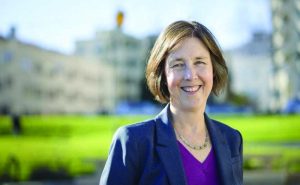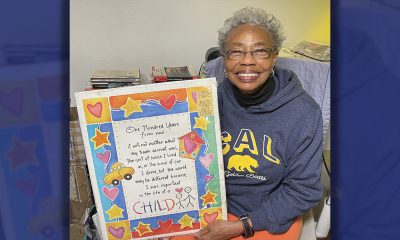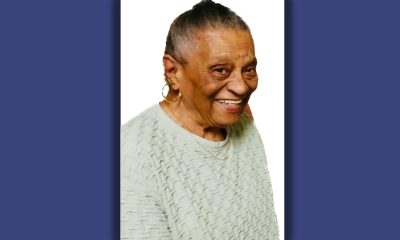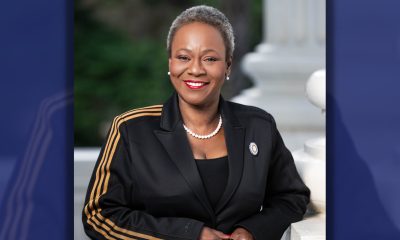Bay Area
The Tragic Sports Abuse of Oakland
All 3 teams leaving?

Oakland is the most victimized sports city on the planet, and there is no close second.
And it’s not Oakland’s fault. Pirates, highwaymen and carpetbaggers have unified their heartless souls to rob Oakland of its championship, and fan-supported, sports existence. Under high crimes and misdemeanors, this is the highest crime in sports pilfering.
The Raiders are the only sports franchise to leave the same American city twice, despite sellout crowds before skipping off to Los Angeles, and sellout crowds again after their inglorious failure in Tinseltown. And now they’re off to Las Vegas, which, in time, might prove a worse investment than playing craps.
But, at least, the Raiders were homegrown, Oakland’s own. The Warriors came to Oakland from San Francisco, where the franchise was going broke, and built themselves up financially, with capacity attendance, as by winning three NBA championships in the short space of five years. After that, it was back across the Bay Bridge to San Francisco, where this one-time dynastic bunch has found itself in serious slippage.
And, lastly, Oakland is one fleeing franchise short of a hat trick — all three of its teams taking flight. The last team still with an Oakland zip code, the Athletics, are looking at Las Vegas or — who knows? — the moon for a new home. This is the same franchise that bottomed out in Kansas City, after burning out in Philadelphia, and now is seeking to bury Oakland among its dearly departed.
It isn’t failure on the field of play that’s driving these teams elsewhere. Despite becoming a major-league sports town in 1960, a late start in sports economics, Oakland has produced 10 national championships. The A’s and Warriors have four titles apiece, and the Raiders have won two Super Bowls.
And it isn’t disappointment at the box office that these teams can use as an alibi. The Raiders and Warriors filled their facilities despite having long stretches of losing seasons, built on horrific draft picks. Jamarcus Russell, anyone? Joe Smith? The A’s haven’t drawn nearly as well as the other two tenants at the Oakland Coliseum Complex, but when you’re constantly trying to move to Fremont, Santa Clara, and now Las Vegas, why should local fans display loyalty?
I’ve been observing the Oakland sports scene closely since 1964 after gaining employment at the Oakland Tribune, which has left Oakland, too, with no relocation, no nothing. My arrival coincided with the building of the Coliseum and adjacent Arena in 1966, which was large-scale planning since the Raiders were the only team in town back then. The A’s moved here in 1968, and the Warriors in 1974. The Coliseum and Arena, over time, would be the last of the dual sports complexes in the country, but let it be known that it was the absolute best of its kind.
First, it was built in the middle of six Bay Area counties, with Contra Costa to the North, Santa Clara to the East, San Mateo to the South, San Francisco and Marin to the West, and Alameda County where the first shovel of dirt was dug for the complex itself.
Fortuitous still, the complex would be abutted in time by rapid transit (BART), a freeway, and railroad tracks, with an airport five minutes away. The Father of the Coliseum, the late Robert Nahas, was Einstein-like in his blueprints for the complex, and for Oakland’s future as a big-league, big-time sports town.
Adding to that image were the most loyal, passionate and, well, loony crazy fans. Oakland has the most abused fans in the universe in spite of fanaticism that couldn’t be rivaled anywhere. Who gets stepped on not once, but twice, by the black-attired, blackhearted Raiders and still professes loyalty. If the Raiders fail in Las Vegas, and they might eventually, the Coliseum in Oakland would fill up again. Nobody loves a team like Raider fans, bless their ravaged souls.
You mean the Raiders could come back to Oakland for a third go-around? If the Davis family is in charge, of course. Al, the father, was a user, and Mark, the son, a loser. Neither one of them, in all this time, has stuck their nose out for Oakland. They advertised little if all, they gave to charities nil, and they expected deference regardless throughout their penuriousness. There have been traitors replete throughout the history of organized sports, but nothing like the Davises, father and son: Benedict Arnold and Benedict Arnold Junior.
But as bad as they were, Oakland’s biggest problem, sadly, is Oakland itself. Oakland’s sports owners look at Oakland as a place to run from, rather than to grow with. Being situated across the Bay from San Francisco always has been Oakland’s detriment, dating back to early last century when Oakland native Gertrude Stein said of Oakland: “There’s no there there.” She said that after returning home from Paris and finding her old neighborhood changed, but historians took it as a slight on Oakland.
So the Warriors’ new ownership of Joe Lacob and Peter Gruber began packing up right away for San Francisco, but like other sports ownerships, myopically. Because, at that same juncture, Oakland suddenly came alive as a city commercially, more so than at any other time in history. New businesses, new buildings, new daytime choices, and new nighttime adventures suddenly spurted. Oakland had become, of all things, a boomtown.
Imagine that, while the thinking of the Raiders and Warriors ownerships could go “boom” in their faces. There is no rapid transit or railroad tracks abutting the stadium in Las Vegas, and there is limited parking next to the stadium, which means most fans will tailgate a mile away and take transit to the stadium. The Warriors have no rapid transit close by, no parking to speak of, and game tickets cost high-roller prices.
What was there in Oakland has been lost in franchise-and-fan togetherness in Las Vegas and San Francisco. And if the Raiders and Warriors start losing, which is immediately possible, who will want to mortgage homes and businesses to pay those exorbitant ticket prices? And if the A’s follow the Raiders to Las Vegas, it gets costlier because the A’s will need a domed stadium. You see, you can’t play baseball in 115-degree heat, for there’s nothing cool about that.
It just might turn out, for all three Oakland teams, that “there’s no there there” in their new digs.
The Oakland Post’s coverage of local news in Alameda County is supported by the Ethnic Media Sustainability Initiative, a program created by California Black Media and Ethnic Media Services to support community newspapers across California.
Bay Area
Oakland Finishes Final Draft of Downtown Specific Plan for Potential City Improvements
In late March, Oakland’s city administration announced the final draft of their Downtown Specific Plan, a blueprint for city improvements and developments over the next 20 years. The comprehensive 474-page plan lays out policies for downtown developments that will increase economic, social and cultural, and communal opportunities for residents and workers who frequent this essential hub in Oakland.

By Magaly Muñoz
In late March, Oakland’s city administration announced the final draft of their Downtown Specific Plan, a blueprint for city improvements and developments over the next 20 years.
The comprehensive 474-page plan lays out policies for downtown developments that will increase economic, social and cultural, and communal opportunities for residents and workers who frequent this essential hub in Oakland.
Several departments over the course of eight years developed the plan, with two phases that emphasized a need for community input from local stakeholders, such as leaders and residents, and a focus on the role of social and racial equity in past and future developments.
Throughout the extensive plan, the concept of equity for marginalized communities is embedded with each goal and priority for the improvements to downtown. It acknowledges that social and racial barriers are preventing these communities from thriving on an equal playing field.
The authors identified six key disparities, or ‘equity indicators’, that set the baseline for how success will be measured for the improvements. These indicators include the burden of housing costs, homelessness, displacement, disconnected youth, unemployment rate and median income.
The plan is also broken up into chapters, each describing a major issue or topic that is plaguing downtown residents and workers, such as mobility, culture preservation, community health and sustainability, and land use and urban design.
Within each chapter, the authors dedicate a section to the impacts of the COVID-19 pandemic for the various areas of interest, illustrating how disparities and inequities increased before and after the disease’s peak.
Two major issues highlighted in the plan are economic opportunity and housing and homelessness. Both of these issues have been aggravated by the pandemic and require substantial support and resources to move forward.
Many reports coming out of the commercial and residential districts downtown have blamed the rise in crime and cost of living as reasons for leaving Oakland for other cities or closing down indefinitely.
The plan attributes rising rents of both residential and commercial properties to the displacement of local businesses and entrepreneurs. Downtown also has an imbalance in the jobs to housing ratio, which limits access to jobs as commuting distances increase.
Other concerns for the local economy are barriers to employment opportunities for workers of color, non-English speakers, and those with limited access to transportation. As stated in the plan, downtown also has a lack of vacancies near public transit hubs, such as BART, bus stops or ferry terminals, which could save workers money and time for their commutes into the city.
According to the downtown plan, the average unemployment rate for the white population was 5.9%, but the Asian population was at 6.7%, and for the Black population it was even higher at 10.4%.
The proposed solutions for the lack of economic prosperity include providing assistance to local businesses owned by people of color, reinforcing downtown as the ‘place to be’ for nightlife entertainment, and building businesses closer to public transit.
The addition of over 18.3 million (m) sq. ft. of new commercial space, 1.3m sq. ft. of new institutional space, and 500,000 sq. ft. of new industrial space, could potentially create almost 57,000 jobs downtown.
Housing and homelessness, issues closely tied to economic prosperity, are top concerns for Oakland residents. High rents have led to displacement and homelessness for those unable to keep up with the rising costs of the Bay Area.
Over 5,000 people are currently experiencing homelessness in Oakland, according to 2022 Point In Time data. 60% of this population is Black despite only making up nearly 20% of the total city population.
The plan explains that by adding nearly 29,000 new homes and expanding affordable housing units across the city by 2040, this would help alleviate the stress of obtaining and affording a home.
Strategies proposed to tackle the housing and homelessness crisis include increasing renter protections, providing additional shelters and services for homeless residents, and promoting homeownership in downtown with first-time buyer assistance and proactive assistance to vulnerable homeowners.
The plan acknowledges that the implementation of changes and developments amongst the several concerns outlined in the document will take time, both in short and long term periods.
To better explain how and when each project will be addressed over the course of the next two decades, a detailed 123-page graph shows which agencies, potential funding sources, and costs come with the goals.
The Oakland Planning Commission and Landmarks Preservation Advisory Board will each hold public hearings regarding the final draft of the Downtown Plan in May and June.
Bay Area
Vivian Coit, 98
Vivian Coit, a proud Dallas, Texas native made her way to the great state of California in 1943. She was a mother, grandmother, great-grandmother, and great-great grandmother.
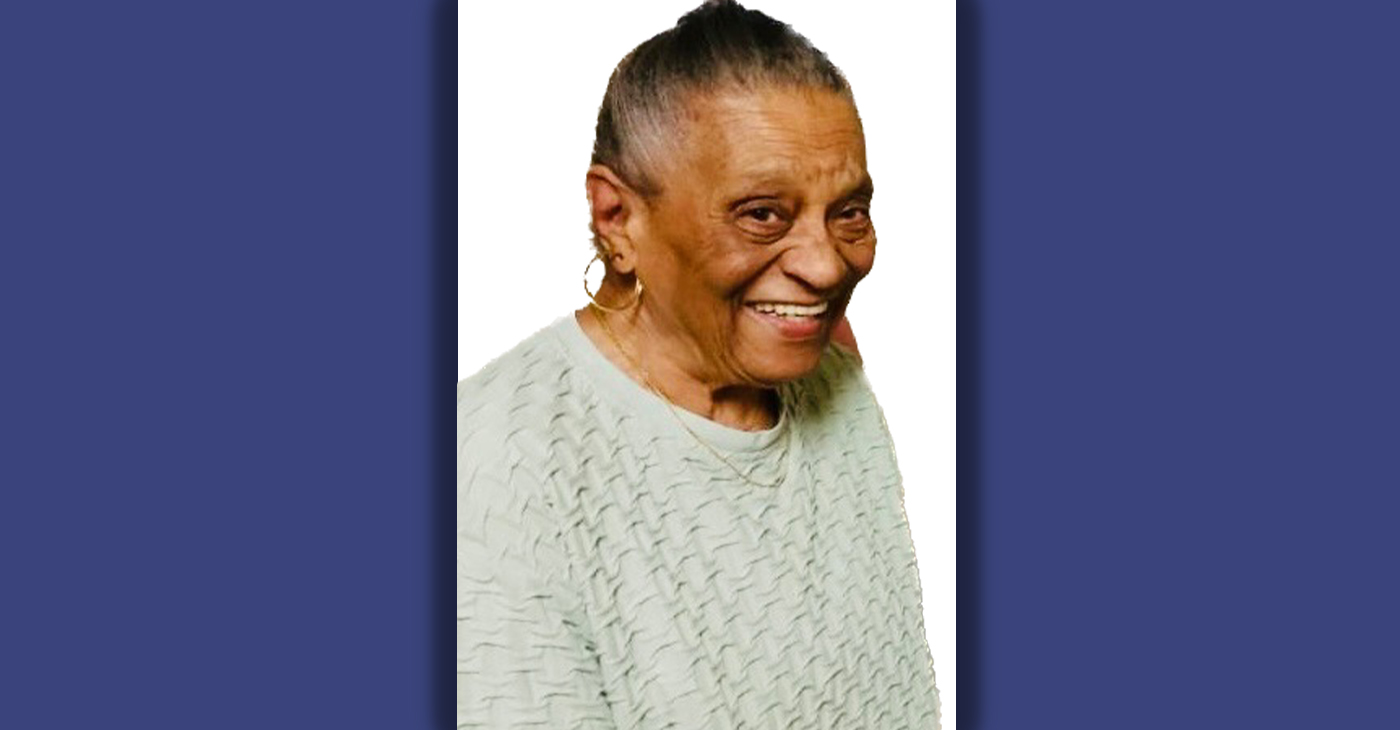
Celebrating A Life Well Lived
Sept. 15, 1925 ~ March 30, 2024
Vivian Coit, a proud Dallas, Texas native made her way to the great state of California in 1943. She was a mother, grandmother, great-grandmother, and great-great grandmother.
In her 98 years, she had various jobs – San Francisco Naval Shipyard, elevator operator, housekeeping, a salesclerk, and supervisor for the United States Postal Service. After 27 years of service with the United States Postal Service, she retired with numerous commendations. She was a lifetime member of the National Council of Negro Women. and a devoted member of the Washington/Lincoln Alumni Association of Dallas, Texas.
On April 20 at 10:00 a.m., a life well-lived will be celebrated at Beebe Memorial Cathedral CME Church, 3900 Telegraph Ave., Oakland, CA under the leadership of Rev. Antoine Shyne.
Bay Area
Rich Lyons, Longtime Campus Business, Innovation Leader, Will Be UC Berkeley’s Next Chancellor
Rich Lyons, an established economist, former dean of the Haas School of Business and the campus’s current leader for innovation and entrepreneurship, will become the next chancellor at the University of California, Berkeley, the UC Board of Regents announced on April 10.
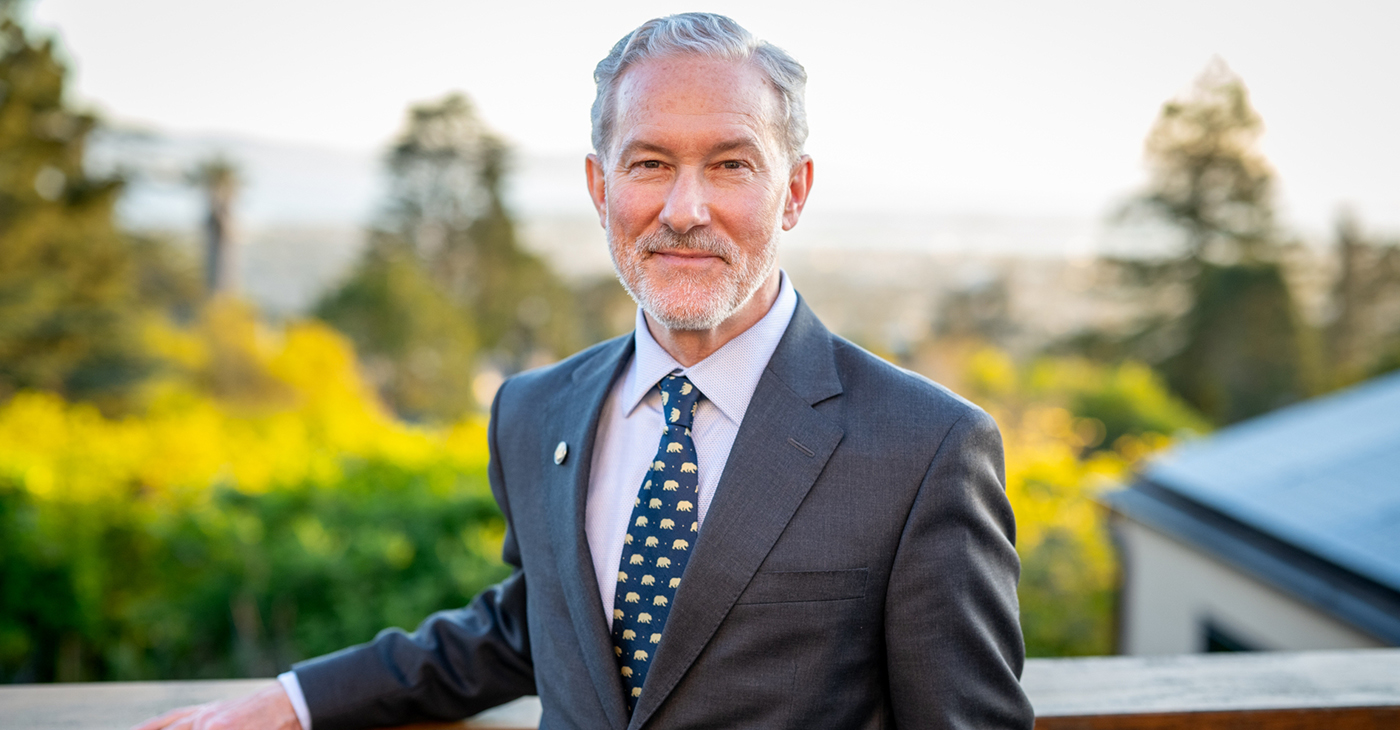
By Jason Pohl
Rich Lyons, an established economist, former dean of the Haas School of Business and the campus’s current leader for innovation and entrepreneurship, will become the next chancellor at the University of California, Berkeley, the UC Board of Regents announced on April 10.
The board’s unanimous confirmation makes Lyons, 63, the first UC Berkeley undergraduate alumnus since 1930 to become the campus’s top leader. In an interview this week, Lyons said he credits his Berkeley roots and his campus mentors with encouraging him to ask big questions, advance institutional culture and enhance public education — all priorities of his for the years to come.
Lyons, who will be Berkeley’s 12th chancellor, will succeed Chancellor Carol Christ, who announced last year that she’d step down as chancellor on July 1.
“I am both thrilled and reassured by this excellent choice. In so many ways, Rich embodies Berkeley’s very best attributes, and his dedication to the university’s public mission and values could not be stronger,” Christ said. “I am confident he will bring to the office visionary aspirations for Berkeley’s future that are informed by, and deeply respectful of, our past.”
Rising through the Berkeley ranks
Born in 1961, Lyons grew up in Los Altos in the early days of the Silicon Valley start-up boom.
He attended Berkeley, where he graduated in 1982 with a Bachelor of Science degree in business and finance. Lyons went on to earn his Ph.D. in 1987 in economics from MIT. After six years teaching at Columbia Business School, Lyons returned west, where in 1993 he joined the Berkeley faculty as a professor of economics and finance, specializing in the study of international finance and global exchange rates.
He’s remained on campus since, with one notable exception.
Starting in 2006, Lyons spent two years working at Goldman Sachs as the chief learning officer. It was a period that instilled in him an appreciation for leadership and the importance of organizational culture.
He carried those lessons with him when he returned to campus in 2008 and became the dean of the Haas School of Business.
While dean, Lyons oversaw the construction of Connie & Kevin Chou Hall, a state-of-the-art academic building that opened in 2017 and is celebrated for its sustainability. He also helped establish two new degree programs, linking the business school with both the College of Engineering and the Department of Molecular and Cell Biology.
But it was his creation of four distinct defining leadership principles that spurred a sweeping culture initiative at the school that stands out in the minds of many. Those values — question the status quo, confidence without attitude, students always, and beyond yourself — became a creed of sorts for new students and alumni alike.
Those values are important, Lyons said, because they shape and support the cohesive structure of a strong, connected community — spanning science and technology to the arts and humanities. They also convey the story about what it means to be at Berkeley and to believe in the university’s public mission.
“When we are great as educators, it’s identity-making,” Lyons said. “We’re helping students and others see identities in themselves that they couldn’t see.”
Lyons in January 2020 became Berkeley’s first-ever chief officer of innovation and entrepreneurship.
Building on his research exploring how leaders drive innovation and set behavioral norms and culture, Lyons worked to expand and champion Berkeley’s rich portfolio of innovation and entrepreneurship activities for the benefit of students, faculty, staff, startups and external partners.
It was a major commitment to thinking outside the box, he said. One need only look to the Berkeley Changemaker program that he helped launch in 2020 to see innovation and entrepreneurship in action.
The campuswide program with some 30 courses tells the story of what Berkeley is — the story that members of the Berkeley community can tell long into the future. Berkeley Changemaker started as an idea and its courses quickly became among the most popular academic offerings on campus.
“Over 500 students showed up,” he said. “Why? Because it’s a narrative. It’s not just a name. It’s not just a curriculum. It’s not just a course. It’s a way of living, and it’s a way of living that Berkeley has occupied forever. This idea that there’s got to be a better way to do this, question the status quo.”
-

 Activism4 weeks ago
Activism4 weeks agoOakland Post: Week of March 20 – 26, 2024
-

 #NNPA BlackPress3 weeks ago
#NNPA BlackPress3 weeks agoCOMMENTARY: D.C. Crime Bill Fails to Address Root Causes of Violence and Incarceration
-

 #NNPA BlackPress3 weeks ago
#NNPA BlackPress3 weeks agoMayor, City Council President React to May 31 Closing of Birmingham-Southern College
-

 #NNPA BlackPress3 weeks ago
#NNPA BlackPress3 weeks agoFrom Raids to Revelations: The Dark Turn in Sean ‘Diddy’ Combs’ Saga
-

 #NNPA BlackPress3 weeks ago
#NNPA BlackPress3 weeks agoCOMMENTARY: Lady Day and The Lights!
-

 #NNPA BlackPress3 weeks ago
#NNPA BlackPress3 weeks agoBaltimore Key Bridge Catastrophe: A City’s Heartbreak and a Nation’s Alarm
-

 #NNPA BlackPress3 weeks ago
#NNPA BlackPress3 weeks agoBaltimore’s Key Bridge Struck by Ship, Collapses into Water
-

 Activism3 weeks ago
Activism3 weeks agoOakland Post: Week of March 27 – April 2, 2024

